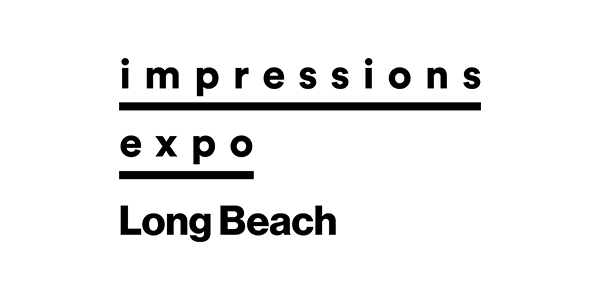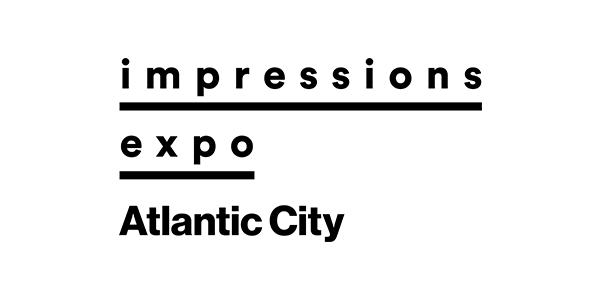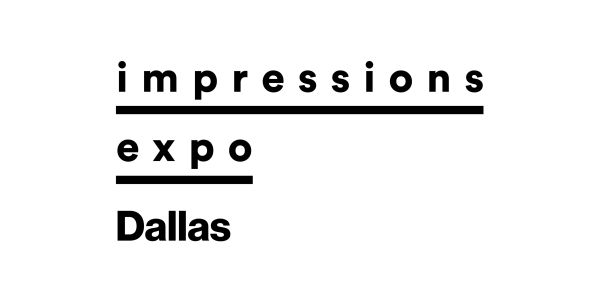Starting a custom decorated apparel business can be an exciting venture, to say the least. But while you may think (hope?) your creativity and design skills alone will be sufficient to set you apart, understanding some foundational business concepts is equally vital to making any commercial venture a success. From managing finances to navigating customer relationships, familiarity with essential business terms will help you operate efficiently and professionally.
What follows are a couple of dozen terms any and all screen printers, embroiderers, heat-press decorators and entrepreneurs in general need to master as they enter the custom apparel industry. Understanding these terms will go a long way to helping you make informed decisions and communicate confidently as a business owner.
Revenue
Revenue refers to the total amount of money your business earns selling custom apparel and/or any other customized merchandise or services you may offer. For example, if you print and sell 100 T-shirts at $20 each, your revenue would be $2,000. Note that while it’s tempting to focus solely on revenue, that’s only part of the equation, as you also need to subtract your costs and expenses to calculate actual profitability.
Gross versus Net Income
Understanding the difference between gross and net income, or net profit, is critical for managing your finances effectively. Gross income refers to the revenue generated by your business before any expenses are deducted. It’s essentially the “top line” number that shows how much money your business has brought in from sales or services.
Net income (or profit), on the other hand, represents the “bottom line” or the amount remaining after all expenses have been accounted for. These expenses include costs of goods sold (COGS), operating expenses, taxes and other deductions or costs. Keeping track of gross and net income helps business owners gauge overall performance and profitability.
Profit Margin
Profit margin is the percentage of revenue that remains as profit after covering all your expenses, including materials, labor, overhead, etc. For example, if you sell a screen-printed T-shirt for $20 but it costs you $12 to produce, your profit margin is 40 percent. To derive this number, subtract the cost of producing an item from its price then divide by the price and multiply by 100 to create a percentage figure. (In this case: Subtract $12 from $20, then divide by $20 and multiply by 100.) Understanding this number will help you price products appropriately and grow your bottom line.
Break-Even Point
Your break-even point is the point at which revenue equals expenses, meaning you’re neither making a profit nor incurring a loss. For example, if your fixed costs (for things like equipment and rent) and variable costs total $2,000 per month, you’ll need sufficient sales/revenue to cover this amount to reach your break-even point, at which point you will be able to (hopefully) begin making a profit.
Capital
Capital is a critical resource in any business, representing the financial assets or resources a company uses to fund its operations and growth. It comes in various forms, including cash, production equipment, property and investments. Effective management of capital, including investments in additional or more advanced production equipment, is vital for ensuring operational stability and driving long-term success. Understanding and leveraging capital strategically can empower a business to seize opportunities, weather financial challenges and achieve sustainable expansion.
Overhead
Overhead costs include the ongoing expenses of running your business that aren’t directly tied to production. This might include renting your production space, utilities, insurance or software subscriptions. Tracking your overhead is another vital factor in helping you accurately calculate your pricing.
Variable Costs
Variable costs are expenses that change based on the number of products you make. For custom decorators, this could include blank T-shirt costs, ink, transfers, embroidery thread and labor. Lowering your variable costs through bulk purchasing, supplier discounts or automation can significantly boost profits.
Cash Flow
Cash flow measures the money coming in (e.g. revenue from retail sale) and the money going out (e.g. expenses for materials and labor). Positive cash flow means more money is coming into your business than leaving it—crucial for staying afloat and funding future growth.
Accounts Payable vs. Accounts Receivable
Accounts payable represent the money your business owes its suppliers or vendors for goods and services received. These are “liabilities” that need to be settled within a specific timeframe to maintain good relationships and avoid penalties. Accounts receivable, on the other hand, refer to money owed to your business by customers for products or services you have provided. These are assets and reflect future cash inflows that will help sustain your operations.
Assets and Liabilities
Assets and liabilities represent the fundamental components of a company’s financial situation and serve as the building blocks for assessing its financial health. Assets are resources owned by a business, which provide economic value and can generate future benefits. These include tangible items like cash, inventory and property, and intangible assets like patents or brand reputation. Assets reflect what a business owns and leverages to operate or grow.
Liabilities, on the other hand, represent obligations or debts that a business owes to others, such as loans, accounts payable or accrued expenses. These obligations often arise from past transactions and require repayment over time, i.e., liabilities illustrate what a business owes.
The balance between assets and liabilities is critical to determining a company’s net worth and financial stability. While assets demonstrate potential for growth and income generation, liabilities highlight the financial risks and commitments that must be also managed. Ultimately, maintaining a healthy ratio of assets to liabilities is vital for achieving long-term success and building resilience.
Target Market
Your target market is the specific group of customers you’re trying to reach, such as local businesses, sports teams or event organizers, to name just a few. Understanding your target market helps you tailor your products, pricing and marketing efforts to reach the customers you are best positioned to serve and successfully meet their needs.
Brand Identity
Brand identity encompasses the various visual and emotional aspects of your business, including logo, colors and “tone of voice,” as generated through everything from print ads to your company’s social media efforts. A strong identity helps a custom decorated apparel business stand out and build a loyal customer base.
Business Plan
A business plan outlines your company’s goals, strategies, target audience, and financial projections. It acts as your roadmap to success and can also be crucial if you’re seeking funding or partnerships.
Inventory Management
Inventory management involves keeping track of items like blank apparel, inks, embroidery supplies and packaging for shipments of goods. Efficient inventory management prevents overstocking (which ties up cash) or understocking, which can lead to delays and lost customers.
Turnaround Time
Turnaround time refers to how quickly you can complete and deliver a particular order. Meeting or exceeding customer expectations in terms of turnaround times is a critical to building trust and loyalty, especially in an area as competitive as the decorated-apparel industry.
Customer Retention
Customer retention refers to a business’s ability to keep its customers coming back. Offering exceptional service, satisfaction guarantees and enticements like loyalty perks can go a long way to ensuring long-term relationships and repeat business.
Upselling
Upselling is the practice of encouraging customers to buy something in addition to or in an upgraded version of their intended order with an eye toward generating additional revenue. Options for doing so include things like offering premium garments or decorating options, like embroidery, or bulk order discounts.
Cost-Per-Unit (CPU)
Cost-per-unit is the cost of producing a single item, accounting for both fixed and variable costs. Knowing this amount ensures you’re pricing your products to cover costs and earn a profit.
Wholesale Pricing
Wholesale pricing refers to the reduced prices you offer to bulk buyers, typically businesses or larger organizations. It’s a pricing structure designed to encourage larger orders and increase revenue.
Return on Investment (ROI)
ROI measures the profitability of an investment. For instance, if you spend $1,000 on new printing equipment and it generates $4,000 in additional revenue, your ROI is 300 percent. To derive this number, subtract the amount invested from the amount of revenue it generated then divide by the amount invested and multiply by 100 to create a percentage figure. (In this case: Subtract $1,000 from $4,000, then divide by $1,000 and multiply by 100.)
Quality Control
Quality control represent the efforts a company makes to ensure its products meet a certain standard before reaching customers. This may involve from checking for misprints at the end of the process, to standardizing production metrics/processes, like thread tension in embroidery or or dyer temperatures/belts speeds when screen printing.
Marketing Funnel
A marketing funnel outlines the steps your customers take from discovering your business to making a purchase. These steps include:
- Awareness – the process by which a customer first learns about your company, via anything from print and social media ads to word or mouth
- Consideration – the process by which a potential customer actually checks out your website, brick-and-mortar store and/or product line
- Conversion – the process by which a customer places an actual order
Knowing where your customers are in the funnel can help you refine your marketing.
Depreciation
Depreciation refers to the gradual reduction in the value of a production asset over time due to wear and tear, or obsolescence. This concept is particularly important in accounting and finance, as it allows businesses to allocate the cost of a tangible asset, such as a piece of equipment or machinery, over the course of its useful life.
By recognizing depreciation, companies can more accurately reflect an asset’s declining value in their financial statements. There are several methods for calculating depreciation, each suited to different asset types or business needs. Understanding depreciation is essential for keeping accurate records and making informed investment decisions.
Metrics and Key Performance Indicators (KPIs)
Metrics and key performance indicators (KPIs) are used to measure the success, efficiency and progress of an organization toward its objectives. Metrics represent a wide range of measurable data points that provide insights into various aspects of a business, such as revenue growth, customer satisfaction or operational efficiency. KPIs consist of metrics that are specifically tied to a company’s strategic goals and serve as critical benchmarks to achieving them.
For example, while a metric might track website traffic, a KPI would focus on the percentage of that traffic converting into paying customers. Together, metrics and KPIs help businesses evaluate performance, identify areas in need of improvement and align their strategies with their goals, thereby ensuring long-term success.
Start Your Decorated Apparel Business Confidently
Understanding these fundamental business terms will empower you to run your custom decorated apparel business more effectively, paving the way for growth and success. Whether it’s managing cash flow or engaging with loyal customers, the knowledge you’ve gained here will make smart, informed decisions.





